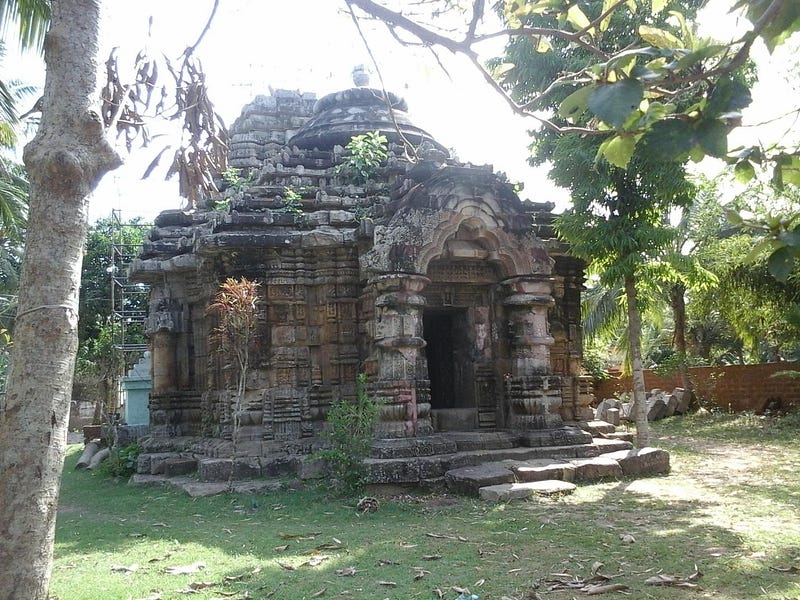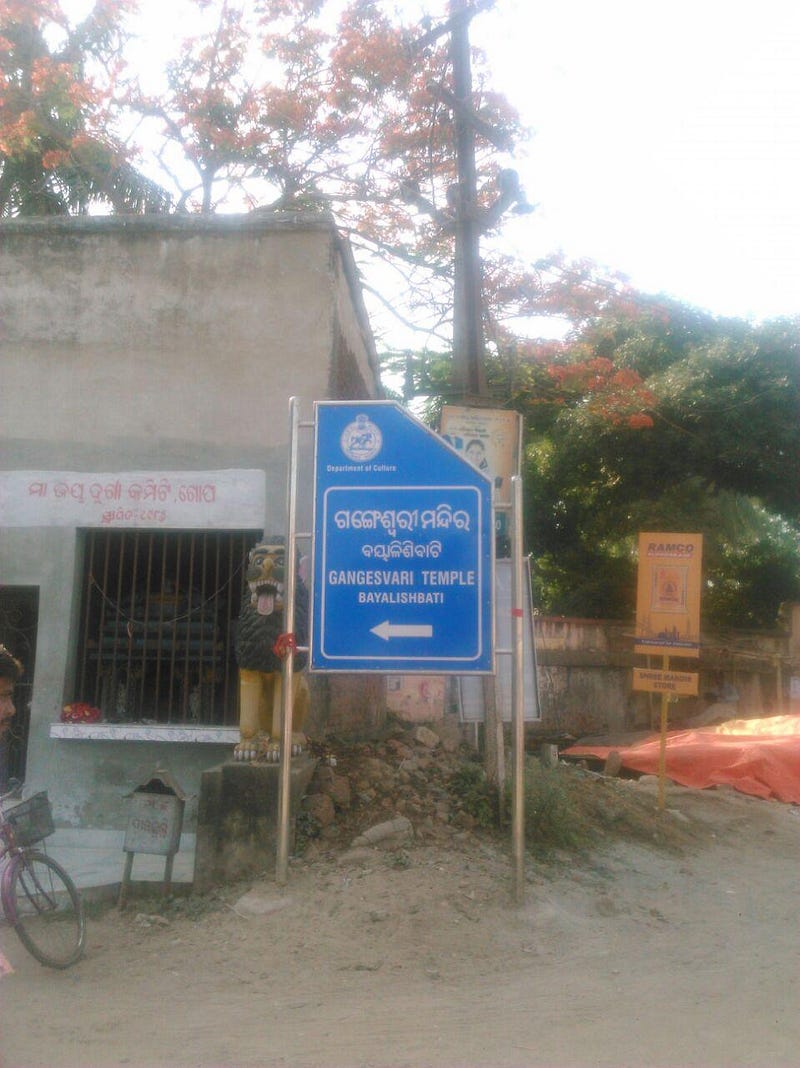
GANGESVARI TEMPLE, VILLAGE-BAYALISBATI, GOP, PURI, ODISHA, INDIA
It was a perfect sunny day to start this much awaited long drive. I started at 6:30am from Uttara Square, Bhubaneswar (Odisha). From where I reached to Gop at 7:30am. I took my breakfast at local tiffin center and suddenly I get delighted by seeing this board of dept of culture.

Last year when I visited this place, board was not there and it took me near about two hrs to reach that place. Odisha state archeology was repairing and renovating this temple at that time and this time all repairing work was completed. Gangeshvari temple, which was, a model temple for the Sun temple Konarka, situated in Bayalisbati, the temple of Goddess GangesVari, who was the Ishtadevi of kings of Ganga Vamsa, like, ChodGanga Dev,Narusingh Dev, etc. is a beautifully carved temple. According to the legends, near about 1200 artisans stay at that place and they travel with big logs keeping stones on them in a nearby river, which was converted in a small pond in due course of time, and taken those to build a bigger temple.
The Engineers, Architects, Supervisors and a lot of workmen stayed, discussed, make rough and final drawings, make layouts and finalize the things for the Sun temple here.
Gangeswari temple has a unique entrance gate. Although the images of all parshvadevtas/ parshvadevis are not there but a beautiful image of Goddess Varahi is still exist as a parshvadevi. Also, an image of Lord Indra on his Airavat elephant is there. Beautiful stone carvings are also there depicting stories and flowers beads. Images of Naga-purusha and Naga-kanya are also there.

Entrance of the temple

It was very much intresting part of this temple. As Goddess Gangeswari was the Ishtadevi of Ganga Vamsha who were the strong believers of Vaishnavism but the temple has a very good image of Muchalinda Buddha. Muchalinda is the name of a nāga, a snake-like being, who protected the Gautama Buddhafrom the elements after his enlightenment. This suggests that the temple may have some connections with Buddhism also.

According to the Shumbha-Nishumbha myth of the Devi Mahatmyafrom the Markandeya Puranareligious texts, the Matrikas goddesses appear as shaktis (feminine powers) from the bodies of the gods. The scriptures say that Varahi was created from Varaha. She has a boar form, wields a chakra (discus), and fights with a sword. After the battle described in the myth, the Matrikas dance — drunk on their victim’s blood.


















The temple has a khakhra vimana and pidha jagamohana of Kalingan order. The exterior is decorated with Dikpalas, Dikpalikas, different form of Siva, Durga, Nayikas, gajas-nara vidala, Chaitya medallion, hunting scene, animals and social scene. Both vimana and jagamohana is pancharatha on plan and panchangabada in elevation. The temple has a Khakhara style vimana and pidha jagamohana of kalingan order. Although the date is not but on the basis of architectural features and sculptural embellishments the temple can be assigned to the Ganga period i.e. about the 13th century A.D. You can find lot of antiquities in this temple and we all odias must feel proud that we are still having a model temple for the Great Sun Temple at Konarka.
Comments
Post a Comment